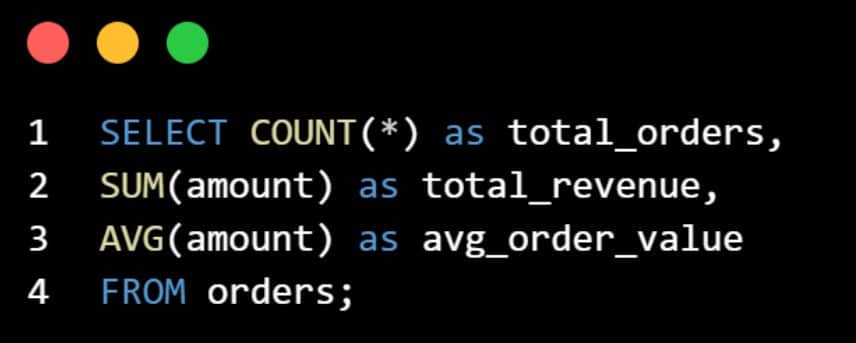Uncover the prowess of SQL with these 7 SQL tricks in data analysis. From subqueries to conditional statements, each technique is a key to unlocking deeper insights into your datasets.
1️⃣ Using subqueries
Subqueries are powerful tools in SQL that allow you to perform complex operations by nesting one query within another. For example, you can use a subquery to find all the customers who made their first purchase in a specific month, and then use that result set to analyze their subsequent purchases.

2️⃣ Aggregation functions
SQL has powerful aggregation functions such as COUNT, SUM, AVG, and MAX that allow you to quickly calculate summary statistics for large datasets. You can use these functions to calculate metrics such as revenue, average order value, or customer lifetime value.

3️⃣ Joins
Joins are used to combine data from multiple tables into a single result set. For example, you can use a join to combine customer data with order data, allowing you to analyze customer behavior based on their purchase history.

4️⃣ Window functions
Window functions allow you to perform calculations over a specific range of rows in a result set. For example, you can use a window function to calculate the running total of sales over a specific period, such as the last 30 days.

5️⃣ Conditional statements
SQL has powerful conditional statements such as CASE and IF-THEN-ELSE that allow you to perform complex logic in your queries. For example, you can use a CASE statement to classify customers into different segments based on their purchase behavior.

6️⃣ Indexing
Indexing is a technique used to optimize the performance of queries by creating a data structure that allows for faster data retrieval. By indexing frequently queried columns, you can significantly improve the performance of your SQL queries.

7️⃣ CTEs (Common Table Expressions):
CTEs allow you to define a temporary result set that can be referenced in subsequent queries. For example, you can use a CTE to create a summary table of customer purchases, and then use that table in subsequent queries to analyze customer behavior.

Please bookmark this site to stay updated for coding tips to data analysis tricks with a diverse range of content that empowers your programming journey. Keep evolving with us!

